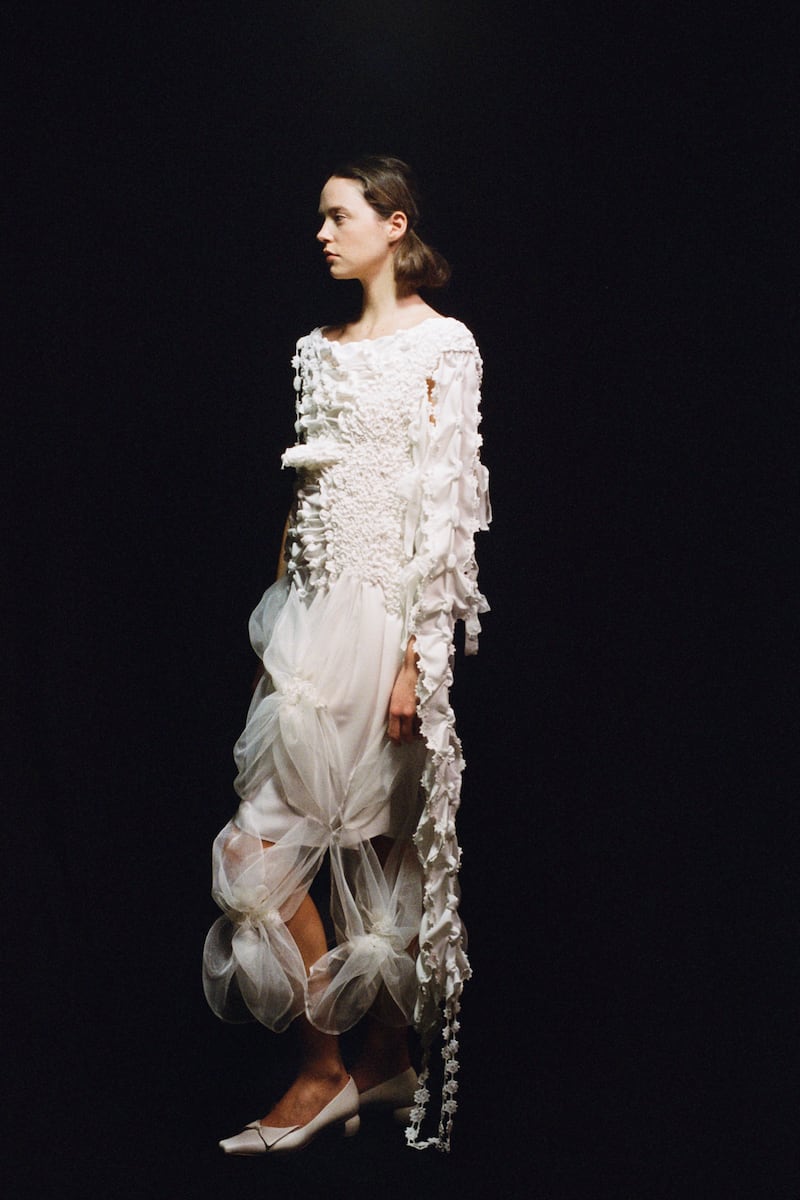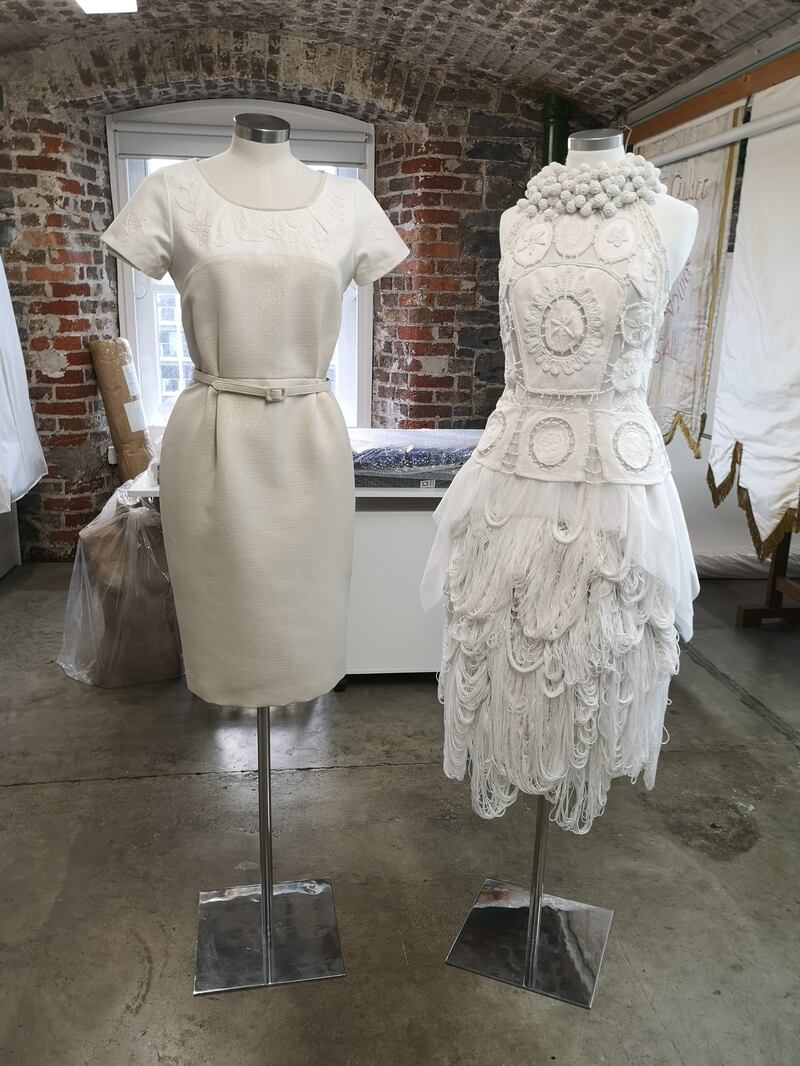Long before digital nomads spread out across the country with their laptops and their lattes, Irish women in the 1800s were the original remote workers, supporting their families by making lace, everywhere from Carrickmacross to Kenmare. Requiring only the simplest of equipment – and a lot of time and patience – lacemaking was a craft that allowed women to engage in work in parts of the country where other employment options were scarce.
The story of Irish lace played an important part in our history as the cottage industry grew, particularly around the time of the Great Famine, and fine Irish lacework was prized across Europe.
Multi-award-winning Dublin designer Róisín Pierce was granted a Royal Dublin Society craft bursary in 2020 to develop new work with traditional Irish lace makers. Among the fruits of her inspiration and labours was a piece that graced the red carpet of the Met Gala in New York in May, worn by British fashion icon Alexa Chung.
Pierce’s interpretations of Irish crochet lace have revived the craft in a stunningly intricate and fresh way, bringing it to international attention once again – harking back to the days when precious and intricate lace made by the hands of Irish girls and women was worn by Europe’s wealthiest society belles.
RM Block

Discussing the influence on her latest collection, Pierce says a craft that empowered a nation of women continues to evolve through intergenerational collaboration.
“In this iteration, Irish crochet takes on new forms and meaning; hand-crocheted flowers inset within satin crepe squares mimic chain mail,” she says. What’s perceived to be decorative and ornate becomes armour.”
Furthermore, a new generation of contemporary Irish artists is shaking up the craft of embroidery, with exciting examples including Hannah-Clare de Gordun embroidering illustrations to go with author Nicole Flattery’s writing in the last edition of arts magazine Holy Show, and Domino Whisker collaborating with photographer Eimear Lynch on a piece for the Girls, Girls, Girls show curated by Simone Rocha for Lismore Castle Arts last year.
Embroidery also forms part of the fabric of Irish history, specifically the form of the craft that came out of Mountmellick, formerly a thriving Quaker settlement in Co Laois.
Today the Mountmellick Embroidery and Heritage Museum honours the story and creativity of this once flourishing cottage industry. Because of its flax, cotton and woollen mills the town became known as the Manchester of Ireland. The Quakers’ school curriculum for girls included lessons in needlework and embroidery and it became the birthplace of a uniquely Irish white-on-white embroidery style known as Mountmellick Work.
The Mountmellick Embroidery and Heritage Museum is home to a treasure trove of both old and contemporary pieces showcasing the work in everything from heirloom bed coverlets, pillow shams, tablecloths and nightdress cases – surviving in excellent condition – to contemporary takes on the crafts of embroidery and crochet by designers such as Heidi Higgins and Limerick knitwear designer Caroline Mitchell, who have collaborated with the museum on pieces.
Marie Walsh, chair of the voluntary committee behind the museum, says Higgins’s dress epitomises a contemporary and wearable way to use the embroidery. “Her designs are so pared back and elegant. It was really lovely to see an old traditional craft used with modern methods,” says Walsh.

The museum also tells the story of emigration from Mountmellick, with treasured pieces having come back from families in Australia and the donation of a magnificent quilt from the Goodbody family. Theirs is just one of the famous Quaker names in the town that was also home to the Bewleys – of the coffee-roasting dynasty – and the Pims, whose business was poplin manufacturing and drapery.
Walsh explains how the museum is keeping the craft alive, with a weekly drop-in class for people from the area overseen by local expert Dolores Dempsey.
“Some of them would be really experienced embroiderers and a lot of them do lovely things for their families,” she explains, “These ladies would make a ring cushion for a son or daughter getting married, or a Christening robe.”
The museum also hosts one-day workshops and caters to group requests, while its Crafternoon Tea event during Heritage Week also offers a great way to experience more of the process. With an openness to develop the craft and collaborate with contemporary designers, it’s exciting to see where the threads begun in the Mountmellick Museum will lead.
For more information and to make an appointment to visit the museum visit mountmellickdevelopment.com



















